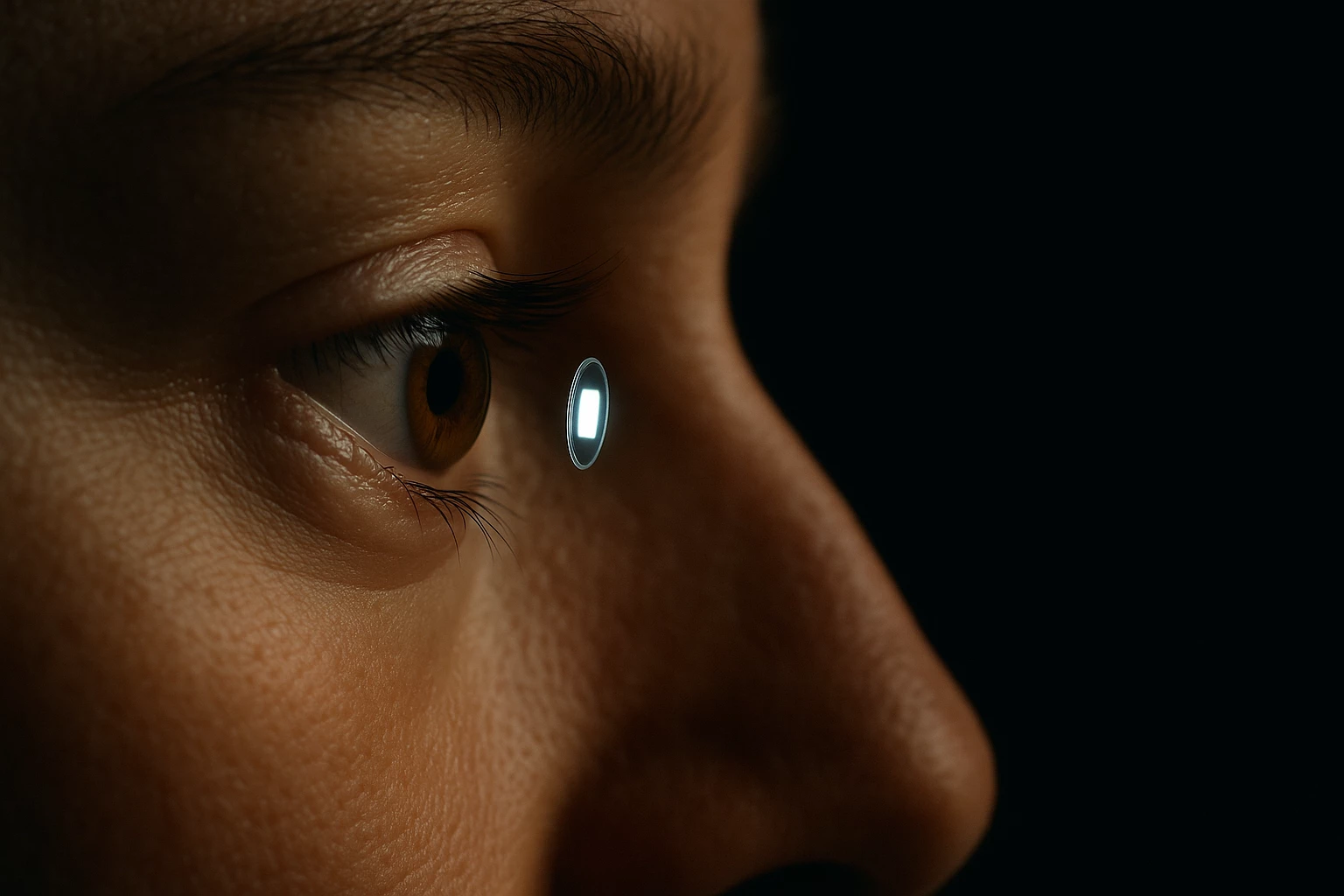Researchers have unveiled a groundbreaking display technology named “retinal e-paper”, achieving resolution beyond 25,000 pixels per inch (ppi) — effectively matching the resolution limit of the human eye. This leap in display engineering promises major advances for virtual reality (VR), augmented reality (AR) and ultra-compact high-fidelity screens.
What is retinal e-paper?
The term “retinal e-paper” refers to a new type of reflective electronic display (rather than light-emitting) engineered by a team from Chalmers University of Technology, Uppsala University and University of Gothenburg in Sweden.
Key characteristics include:
- Pixel size ~ 560 nanometres (~0.56 µm) across.
- Resolution beyond 25,000 ppi — surpassing typical display densities and approaching the theoretical perceptual limit of the eye.
- “Metapixels” made of nanoscale tungsten-oxide (WO₃) disks on reflective metal surfaces, whose optical properties are tuned by applying a weak electrical voltage. Yahoo Tech
- Reflective (ambient light) mode of operation: the screen doesn’t emit light, but rather manipulates reflected ambient light — yielding potential for low power consumption and close-to-eye placements.


Why this matters
Matching human resolution
According to lead scientists, each pixel in this display can correspond roughly to a single photoreceptor cell in the human retina. In other words, going above this density yields no perceptible gain for the human eye.
Near-eye devices & AR/VR
Because the screen is reflective, high resolution and tiny size, it is especially suited for near-eye displays in VR/AR where the screen is very close to the eye and needs to pack in as much detail as possible. The tiny pixel size mitigates “screen-door” effect and pixelation in head-mounted displays.
Energy efficiency
The reflective nature and the use of materials that maintain a “colour memory” (i.e., once switched, a pixel remains in a state without continuous power) mean potentially much lower energy consumption than conventional emissive displays.
Miniaturisation & new form-factors
A demonstration showed an image of 1.4 × 1.9 mm (about 1/4000th the area of a smartphone screen) using this display technology — yet with extremely high fidelity.
Technical details & performance
- Pixels: around 560 nm in size; metapixels built using WO₃ nanodiscs on reflective substrates.
- Resolution: beyond 25,000 ppi achieved in the prototype.
- Switching: The electrochromic nature of WO₃ allows the pixel to switch states (e.g., metallic/insulating) via ion insertion/extraction, enabling colour reflection changes.
- Screen area & demonstration: Example image reproduced was ~1.4 × 1.9 mm in size.
Challenges & next steps
Despite the major breakthrough, there remain important hurdles:
- Scaling up: Moving from a very small prototype area to full-sized displays (e.g., smartphone, AR goggles) will require addressing electronics to drive each pixel, thin-film transistors, and fabrication yields.
- Refresh rate & dynamic content: While the display is reflective and suitable for still images, supporting high-frame-rate video content (e.g., 90 Hz or more typical in VR) may pose engineering challenges.
- Colour gamut & brightness: The reflective design and nanoscale pixel size may limit brightness levels or full colour gamut compared to emissive technologies like OLED. ISPR
- Durability & manufacturing cost: New materials and nanoscale features imply higher complexity; reliability, lifetime and cost will need addressing for commercial viability.
Implications & potential applications
- VR/AR headsets: With ultra-high resolution, this display technology could make virtual environments indistinguishable from reality, reduce eye strain and improve immersion.
- Smart contact lenses / wearable displays: The size and form-factor hint at future possibilities for extremely compact displays embedded close to or on the eye.
- Medical/optical displays: Very high fidelity small-format screens may find niche uses in medical imaging, heads-up displays and other precision visual systems.
- Low-power/high-efficiency electronics: Reflective displays that maintain states with minimal power draw could extend battery life in wearable or remote devices.
Conclusion
The development of retinal e-paper—a reflective display with resolution beyond 25,000 ppi and pixel sizes around 560 nm—marks a major milestone in display science. It aligns screen resolution with the physical limits of human vision and opens new possibilities for ultra-compact, high-fidelity displays in near-eye devices. While commercial deployment remains some years away, this breakthrough poses exciting prospects for VR, AR, wearables and beyond.



